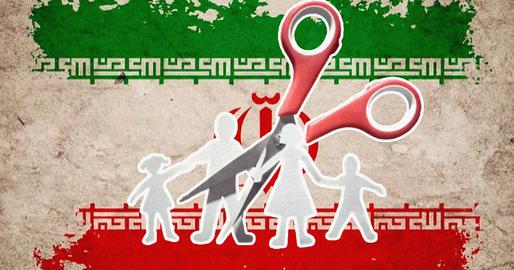It seems President Rouhani has a special interest in the term “smart” in the pandemic. Despite evidence that misguided government policy has led to a second deadly wave of coronavirus in Iran, he told a meeting of the chairmen of the specialized committees of the National Coronavirus Taskforce on Thursday, July 2, that, in its next meeting, the taskforce “will review and approve...executive and effective methods of monitoring instructions and smart physical distancing".
Is “smart” distancing even possible? With reports of hospitals overflowing across Iran and the number of new Covid-19 cases on a dramatic upward trajectory, there is every likelihood that this catchy-sounding measure will be woefully inadequate. But it’s not all bad news, according to Peyman Eshghi, head of the Iranian Blood Transfusion Organization. He claimed that Iran had begun studying coronavirus very early after its outbreak in China Iran and because of this, was “one step ahead” of other countries in its research on treating coronavirus through plasma therapy.
Official Figures From the Ministry
In the 24 hours leading up to July 2, 2,652 new cases of coronavirus were confirmed in Iran, bringing the total number of cases since the country’s coronavirus outbreak to 232,863, said the health ministry’s spokeswoman Dr. Sima Sadat Lari in her daily briefing. With the death of 148 Covid-19 patients in the same timeframe, she said, the total death toll now stands at 11,106.
Dr. Sadat Lari also reported that the number of infections and hospitalizations is on the increase in most Iranian provinces. The provinces of Khuzestan, Kurdistan, West Azerbaijan, East Azerbaijan, Hormozgan, Bushehr, Razavi Khorasan and Kermanshah were assessed as “red” zones.
Provinces Round-Up
Deputy health minister Ghasem Jan Babaei mused that Iran really should worry about “white” provinces more since the low risk-rating would mean the epidemic has not yet peaked there. It was not clear exactly what Jan-Babaei meant because, according to official figures, there were no “white” provinces in Iran.
According to Dr. Alireza Zali, director of the Tehran Coronavirus Taskforce, in the 24 hours leading up to July 2 alone the number of Covid-19 cases in Tehran increased by 7.9 percent and 520 new patients were hospitalized in common wards and ICUs in Tehran province. Due to this increase, he said, a letter had been sent to the National Coronavirus Taskforce asking for a week of strict restrictions in Tehran.
New restrictions were also imposed in the five “red”-coded cities of Fars province. If these were not followed then tighter restrictions would follow, said Anayatollah Rahimi, governor of Fars.
At the peak of the outbreak in the small Ilam province, 175 people tested positive for coronavirus in just one day. This, said its governor Ghasem Soleimani Dashtaki, was a tragedy and testimony to people’s negligence. He also reported that five cities in the province were now in a “red” state and the number of coronavirus cases there had increased by 40 percent in the past 11 days. A number of restrictions will be re-imposed in the province, including reducing office hours and the mandatory wearing of masks in government offices. If the surge continues, Dashtaki said, other measures would be imposed at “every level that might be necessary”.
The deputy governor of Lorestan, Mahmoud Samini, similarly reported that in most cities of Lorestan province the situation had become “red” and if the surge continued, the province would lack the necessary facilities and medication to cope. The president of Lorestan University of Medical Sciences, Mohammad Reza Nikbakht, said there were 10 “red” cities in Lorestan in which the situation was rapidly worsening. He issued an urgent call for more ICU beds and ventilators.
The number of ICU hospitalizations in Mashhad had increased by 50 percent and Mohammad Hossein Bahraini, president of Mashhad University of Medical Sciences, warned that people must avoid unnecessary travel to Mashhad. In normal times, millions of Shia pilgrims visit Mashhad every year to visit the shrine of Imam Reza, the eighth Shia imam.
Warning that a return to the early days of the coronavirus outbreak is possible in Gilan province, Abtin Heydarzadeh, vice president of Gilan University of Medical Sciences, said the number of cases was on the rise while the number of patients being discharged from hospital was falling. Approximately 50 Covid-19 patients per day were being hospitalized in Gilan, he said.
The number of coronavirus cases in Bushehr province was on the rise as well, and Abdol Mohammad Khajeian, vice president of Bushehr University of Medical Sciences, reported that three cities in the province were rated “red” and three other cities were in the “orange” risk category.
Mehdi Tabatabai, vice president of Zahedan University of Medical Sciences, warned that hospital wards in the province of Sistan and Baluchistan were filled to capacity and this had alarmed provincial health officials, warning that the situation could still become even more critical. Ghasem Miri, a vice president of the university, reported that one-third of all coronavirus patients in Sistan and Baluchistan were being hospitalized in ICU wards. This situation started a few weeks ago, he said, and meant that many patients were going to hospital when it was already too late.
Golestan’s governor Hadi Haghshenas said more than 50 percent of people in the city of Gorgon had now been infected with coronavirus – an assessment that flies in the face of the official figures. If the situation does not improve in the next few days, he said, he would have to impose more restrictions in the province.
In Isfahan province, Arash Najimi, a spokesman for Isfahan University of Medical Sciences, reported that 106 new patients with acute Covid-19 symptoms had been hospitalized and warned that with this rapid increase in the number of infections, Isfahan might return to the “red” state in the coming days. He pointed out, however, that only the National Coronavirus Taskforce can impose quarantines.




























comments